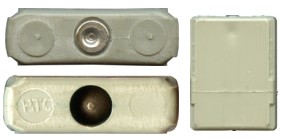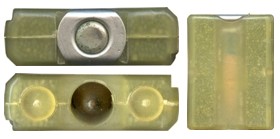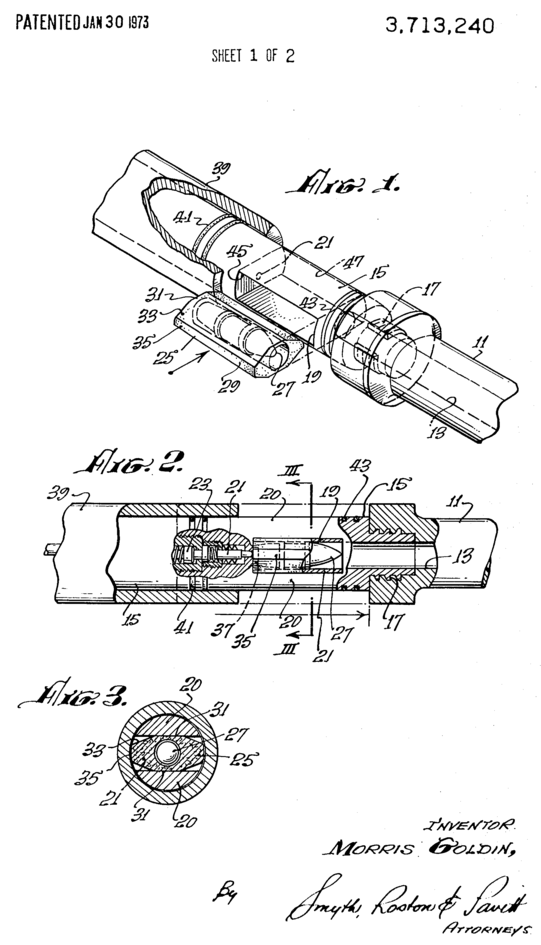McDonnell-Douglas Helicopter Company, formerly Hughes Helicopters developed their AIWS (Advanced Individual Weapon System) with the proto-type funded by the Advanced Research Projects Agency. The design made use of a sideways-loading chamber, with a “sliding sleeve mechanism” where the chamber was fixed while the surrounding sleeve moved. The ammunition was in the form of a flat box, which was slotted into the chamber from the side; the shape led it to be dubbed the “chiclet”. Before firing, the loading and ejection ports were covered by a sliding sleeve to complete the chamber. The next round to be chambered pushed the fired case out of the ejection port. This layout led to a very simple gun mechanism, and ammunition was made in calibres from 5.56mm to 30mm, but again without any production being achieved.
The cartridge is interesting because it is of the “telescoped” type; the propellant is packed around the bullet instead of behind it, leading to a much shorter cartridge. The ammunition was tested in a number of configurations with multiple flechettes as well as single and multiple standard projectiles. Ignition took place in two stages. The primer first ignited a small quantity of propellant; just enough to drive the bullet up into the bore and thereby seal the chamber. The movement of the bullet exposed holes connecting with the main body of the propellant, which then ignited to drive the bullet from the barrel. The expansion space left by the bullet on its initial movement meant that the propellant can be packed in tightly, allowing the case to be very compact. Even though it was tested by ARPA, it was not adopted, where a conventional design was chosen.





